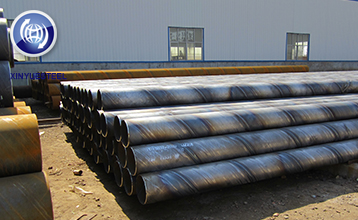Bifocal top or has appeared
Sep. 26, 2021
Recently, Bijiao has gone out of a wave of rapid rise in the market. From a fundamental perspective, the contradiction between supply and demand has intensified. Domestic coking coal production is relatively low, and imported coal has been reduced significantly. Australia has not allowed customs clearance since December last year, and Mongolian coal supply has been greatly disturbed due to the impact of the epidemic. However, starting this week, the fundamentals of bifocals have undergone major changes. In the context of easing the contradictions between policies and the industrial chain, the price of bifocals may have peaked.
Demand starts to fall
This week, the limited coke production has a greater impact. The capacity utilization rate of independent coking companies fell by 0.91 percentage points from the previous month and 5.85 percentage points from the same period last year. However, the capacity utilization rate of downstream steel mills fell by 9.19 percentage points year-on-year, and the decline in coke demand from steel mills is expected to be equivalent to the decline in pig iron demand. In other words, the reduction in capacity utilization of downstream steel mills is much higher than that of coking enterprises. In the third and fourth quarters, another 13.72 million tons of coking capacity was put into use, and both Shandong and Shanxi will see an increase.

More importantly, the inflection point of coke and coking coal inventory is basically confirmed. Coke has been accumulated for two weeks, expanding from 30,000 tons to 60,000 tons; coking coal inventories have increased for the first time after a continuous decline, with 120,000 tons accumulated month-on-month. Although the absolute amount of the bijou tired library is small, the trend of inventory accumulation has been confirmed.
The main reason for the accumulation of coking coal and coke inventories is the increase in double coke inventories in steel plants. The coking coal inventory of steel mills increased by 140,000 tons, and the coke inventory of steel mills increased by 170,000 tons, which fully shows that the strengthening of steel mills' production restrictions has a significant impact on the demand for bi-coke. According to policy requirements, the reduction in crude steel output will continue in September, and the output of molten iron will continue to decline at the current level, which will gradually ease the contradiction between supply and demand for bi-coke from the demand side. From the supply side, the output of the coal washing plant has also returned to the level of early June.
Continue to maintain supply and stabilize prices
The State Council meeting on August 16 pointed out that we should do a good job in ensuring market supply and stabilizing prices, improve and implement plans to respond to rising prices of important raw materials, rationally increase domestic production, scientifically organize stockpiles, and strengthen key commodity market linkage supervision. On August 25, in order to speed up the release of advanced coal production capacity, the relevant state departments and the Inner Mongolia Autonomous Region actively promoted the continuous land use of open-pit coal mines and resumed normal production as soon as possible. On August 26, the National Development and Reform Commission stated that it will strengthen coal price monitoring with relevant parties and investigate and deal with illegal acts such as malicious speculation and price hikes in accordance with laws and regulations. At present, the country is advancing the construction of coal reserve capacity. The overall goal is to form a coal reserve capacity equivalent to 15% of the annual coal consumption of about 600 million tons in the country. Many places have also made arrangements for the construction of coal reserve capacity. For example, the Energy Bureau of Shanxi Province issued a document suggesting that in 2021, Shanxi Province will form an additional government dispatchable coal reserve capacity of more than 3 million tons. Inner Mongolia took the lead in interviews with coal mines, asking for an explanation of the joint price increase of multiple coal mines in Ordos City, and the coal management ticket was gradually liberalized. With the peak of summer electricity consumption coming to an end, the market's demand for coal will decrease. It is understood that in mid-September there will be nearly 50 million tons/year of open-pit mine production capacity that will be successively approved for land use. After all normal production, the monthly output can be increased by more than 7 million tons.
Therefore, under the guidance of a significant decline in demand, policy efforts to release coal production capacity, and to maintain supply and stabilize prices, the dual-coke upward trend may come to an end.



